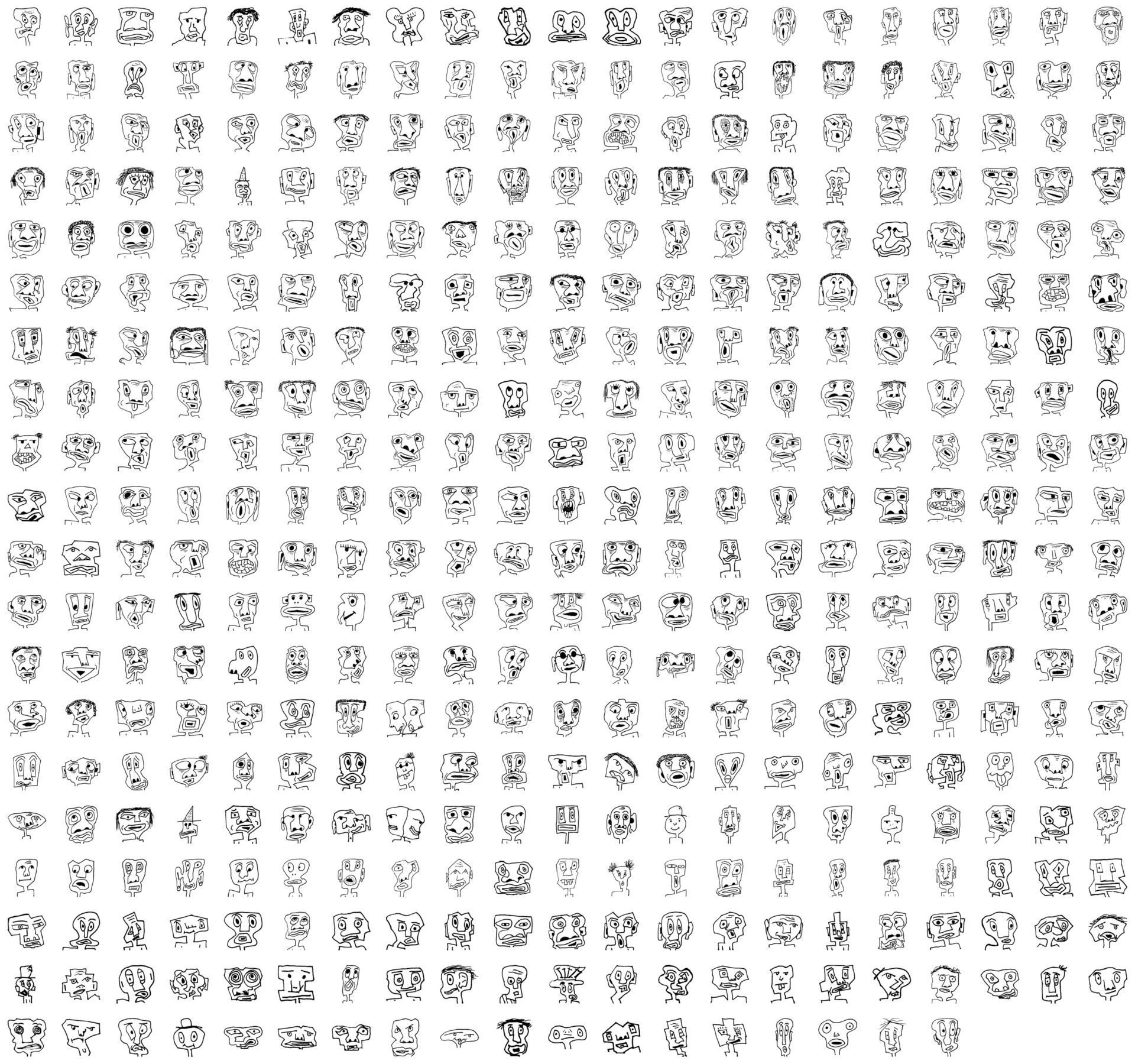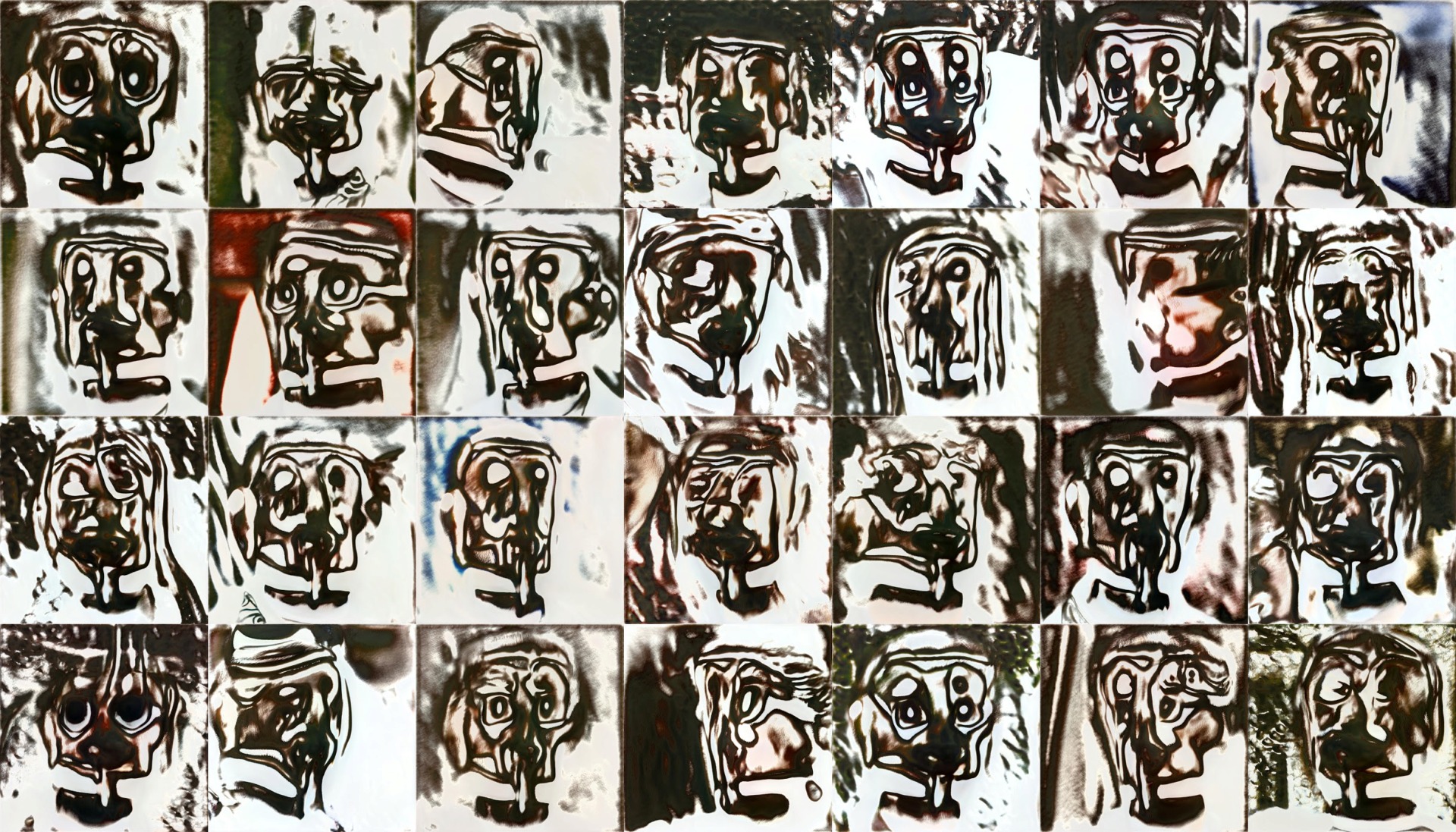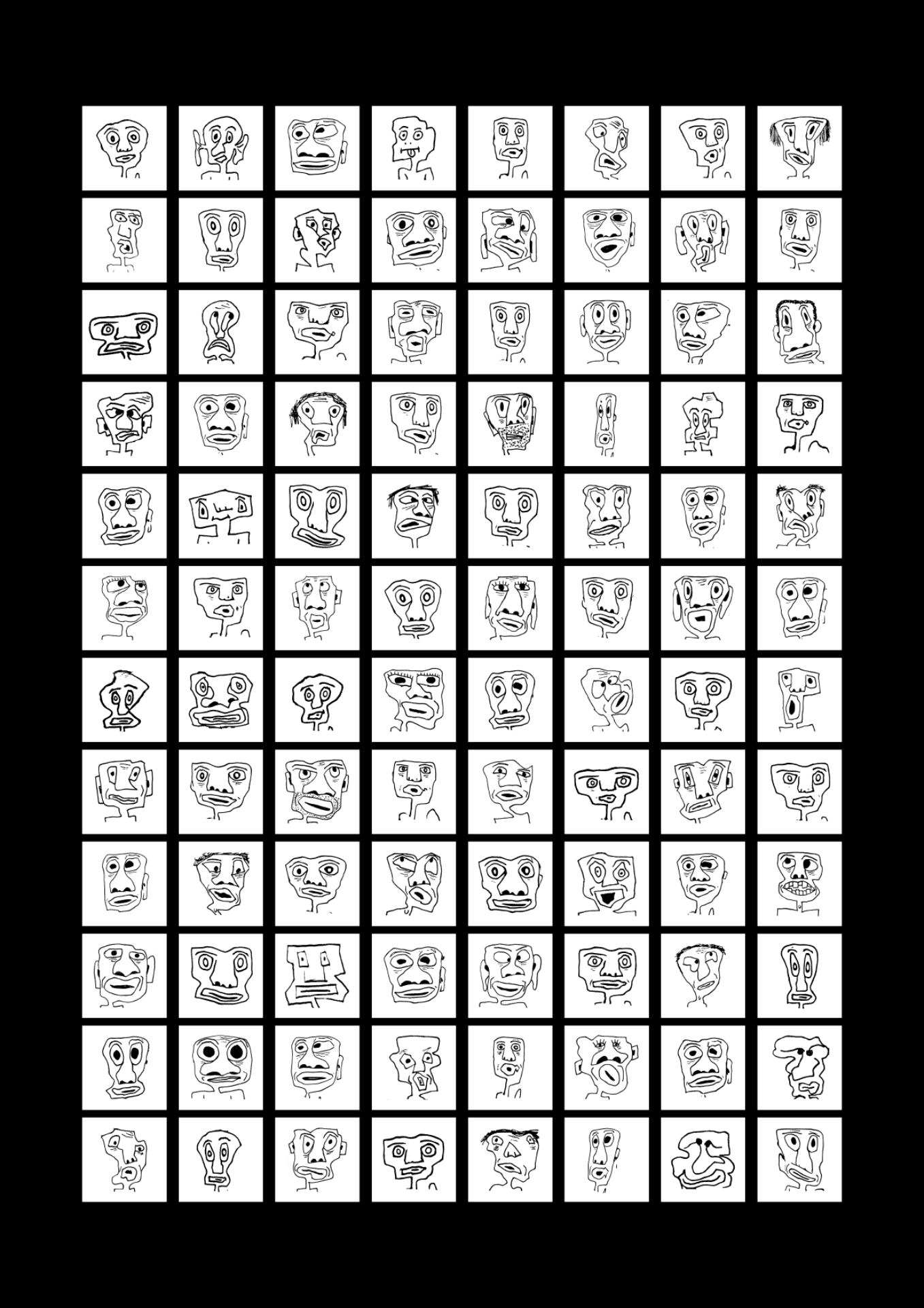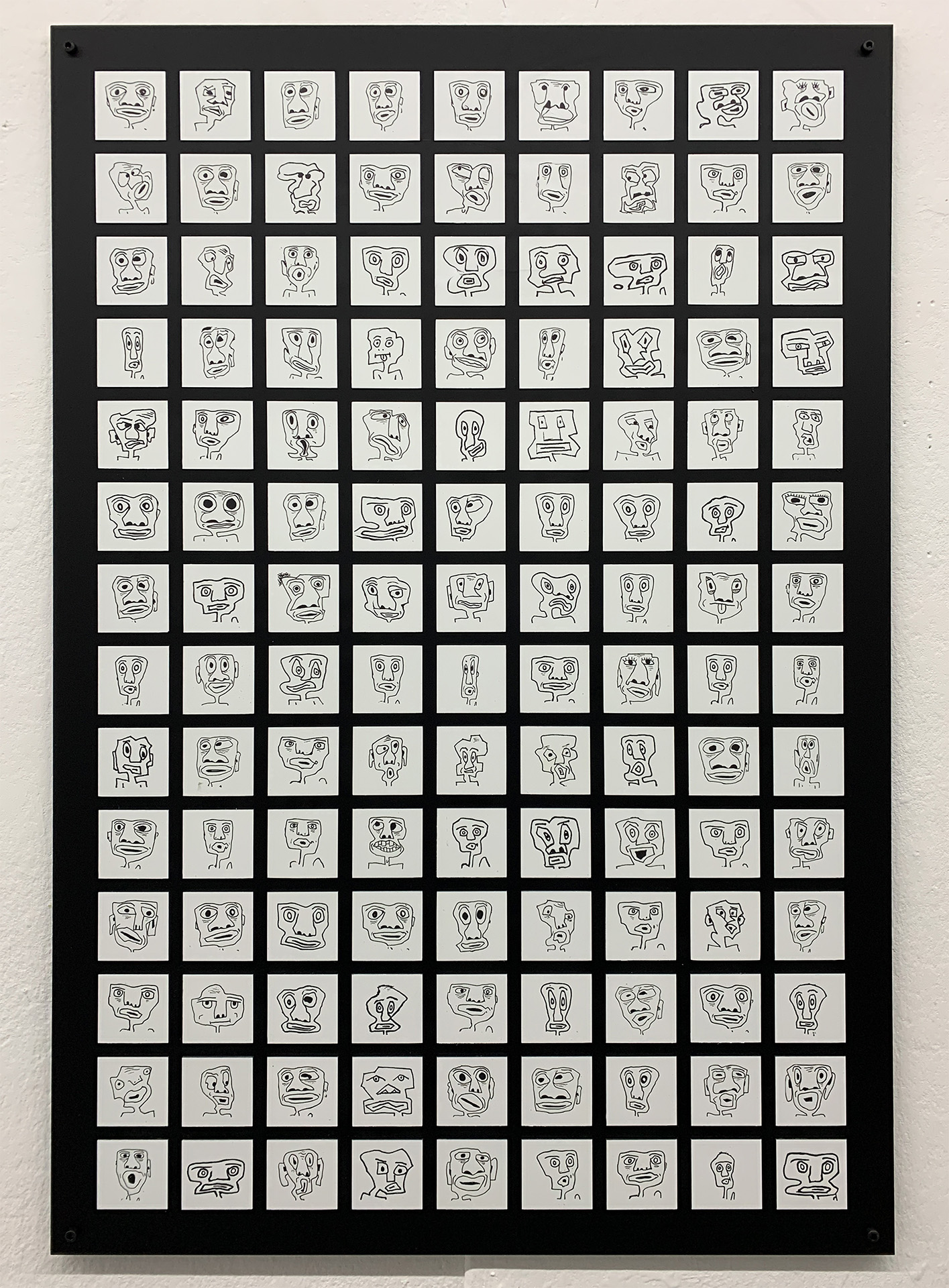
Unknown faces
2020 - recent
Analogue & AI
An ongoing series of experiments
with a custom StylGAN model,
trained on a small dataset of pencil drawn
faces by my good friend FamFarouche
"Unknown Faces" emerged as an experiment in collaborative art with AI, exploring the dynamics between AI-generated works and traditional hand-drawn art. During the initial COVID lockdown, a friend dedicated time to craft a dataset of around 450 small, hand-drawn characters, providing the perfect foundation for my first AI project. The dataset's suitability lay in its ease of conversion to a bitmap, consistent style, line width, and positioning. These characteristics allowed for a compelling comparison between computer-generated and hand-drawn characters.
Following the dataset cleaning process, the training set comprised 423 unique characters, forming the core of the evolving "Unknown Faces" project.
The following image shows the Dataset

Right off the bat, a fascinating confluence came to light. Given the significant increase in training time when initializing the model from noise, a prudent approach is to employ transfer learning. This involves utilizing an existing model as a foundation for training. In essence, the model—specifically in this case, the FFHQ faces model by Nvidia—begins as itself and progressively converges with each epoch toward the provided dataset. This approach expedites the training process since the model doesn't have to converge from noise to a human-readable image.
Notably, this implies that in the initial generations, the model is essentially a blend of the pre-trained Nvidia faces and the character dataset, resulting in uncanny, devilish faces.
I refer to this generation as EvilGAN:


A captivating facet of StyleGAN, in my view, lies in the concept that once the model is trained, all the images it can generate exist mathematically. It's akin to envisioning a (multidimensional) plane where all the data is already arranged and organized. Data that shares strong similarities occupies closely positioned vectors on this plane. This mathematical construct is referred to as the latent space. Given its inherent mathematical structure, one can request vectors and generate corresponding outputs, leading to a dynamically evolving and fluid interpolation between characters:


tbc